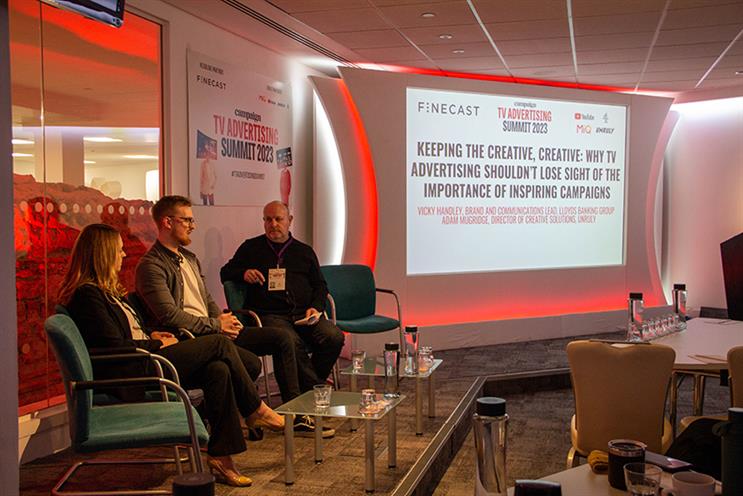
“Emotion in ads is more important than it's ever been,” said Vicky Handley, brand and communications lead at Lloyd Banking Group. Handley was taking part in a fireside chat at Campaign’s recent TV advertising summit discussing whether creativity in TV ads has taken a hit in recent years and whether the pursuit of inspiration in ads needs to increase.
Handley added: “There are so many different advertisers and channels you’ve got to ensure your content is really distinctive. You need to be seen, but you’ve also got to be loved – to give that emotional connection to the brand. You’ve got to be either fun and witty or use deep, emotional storytelling that brings you on a journey and has huge relatability for the target audience.”
Adam Mugridge, director of creative solutions at Unruly, added there is a “huge opportunity” to tap into emotions. “What we’re seeing is the brands that leverage different emotions are the people that get cut through. Trying to be creative in that way is a really good way to get more share of voice.”
Emotional testing
Both experts said pre-launch testing is a crucial way of identifying which parts of an ad work and resonate with an audience.
Mugridge said Unruly uses an offline testing system – a mix of survey questions and facial coding – to observe whether people are emotionally engaged, as well as where and when they engage. “You can really see the moments they’re engaging with content, and we can then give recommendations as to how that can feedback into a media plan.”
Handley added that at Lloyds: “Nothing goes on air without being through several rounds of testing. If you’re not in touch with your customers and what they are thinking, the ad will just bomb.” She gave the example of a Lloyds ad produced during one of the lockdowns when people were feeling low, that included the brand’s familiar black horse running through fields. “It bombed because it was too idyllic. We’d just been through a huge crisis and you can’t come and talk about horses running through fields.”
Testing also enables brands to identify the scenes with the highest levels of engagement and how to use those to create smaller, bespoke formats for use in other channels.
As Mugridge says: “You can’t just have TV – you need to look at it as a whole and tell stories across all platforms. The rise of digital is helping us do that more, with more measurement and more targeting.” He added this isn’t always easy. “It’s hard because we are in a space of dynamic creative, and it’s hard to take a video and dynamically change that for different audiences. But if you can crack it, people will engage more than if they are just seeing the same ad [on a different platform].”
Keep the target audience in mind
Adapting the creative is also necessary when it comes to targeted advertising and for tentpole events such as a sponsored event or national holiday. Mugridge said while the content may not be exactly aligned with every event, brands can still tie-in messaging or be creative with the copy to tweak the messaging.
The same is true for targeted advertising, Mugridge said: “People put a lot of money into targeting and then the content is the same for different audiences – we look at what we can do to make sure creative is optimised to different audiences. It sounds simple, but it’s not – it’s about looking for something we can do to make sure it is attuned to different audiences.”
Handley says Lloyds looks at using different media to do different things – some of Lloyd’s creative is high-level emotionally-driven content, but other areas are detailed and advice-oriented. “For example, with our child savings accounts, you’re talking to parents about building confidence, then you get more detailed which you wouldn’t necessarily do at that 30,000-foot level of brand activity.” With a main target audience of families aged 25-54, Lloyds’ target audience is very broad – meaning content needs to start at the broad awareness level and find the right points to go deeper and focus on conversion.
Finally, Mugridge advised using technologies such as QR codes and smart speakers to continue the conversation post-campaign and generate further engagement. “Usually, post-engagement is zero, so QR codes can be really beneficial as long as it’s done in a strategic way.” He added, relevant offers of free products can help brands get strong results.


.png)